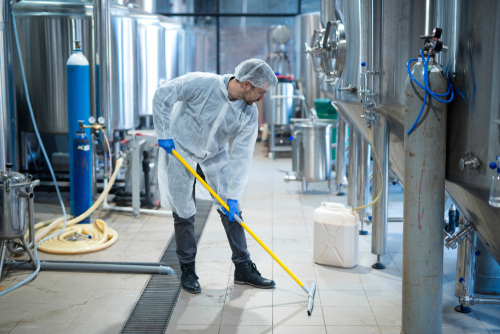Sanitation and sanitization are terms often used interchangeably when discussing cleaning. While they sound similar, they are actually two distinct processes with important differences.
Defining sanitation and sanitization
Sanitation refers to the process of cleaning and disinfecting surfaces and objects to remove dirt, grime, and germs. It is a process that aims to maintain a certain level of cleanliness in a given area, whether it be a home or a commercial office setting.
On the other hand, sanitization is a process by trained professionals to reduce the number of bacteria, viruses and other micro-organisms on particular surfaces or objects to a specified safe level. This is usually achieved by using specialized chemicals and techniques. Sanitization is often used in food manufacturing, processing and serving and in medical facilities to ensure that surfaces and equipment are safe and free of harmful pathogens.
Companies like LACOSTA Services provide both sanitation and sanitization services. Home and office cleaning often focus more on sanitation to maintain a healthy environment for families.
The important role of sanitation
Whether it’s a home or an office, maintaining cleanliness and hygiene needs to be a top priority. A clean space is not only more aesthetically pleasing but is also more comfortable to be in. In addition, maintaining hygiene helps prevent the spread of common harmful bacteria and viruses, which is particularly important in communal settings like workplaces.
There is also a cost-effectiveness aspect to good hygiene. Sick days affect workmates, their progress on projects towards milestones and deadlines, and often the consistency of project leadership.
The process differences between sanitation and sanitization
Sanitation is a broad term that refers to the maintenance of a clean, safe environment. This process involves removing dirt, dust, and other visible particles, as well as reducing or eliminating microorganisms such as bacteria, viruses, and fungi.
Sanitization involves a multi-step process. The first step in the process of sanitation is to identify the areas that need cleaning. This may include floors, walls, ceilings, equipment, and utensils. It is essential for basic sanitation to be completed first, i.e. to remove any visible dirt or debris from these areas before applying any sanitizing agents.
The next step is to choose a sanitizing agent. There are many types of sanitizing agents, including chlorine, hydrogen peroxide, and quaternary ammonium compounds. The choice of sanitizing agent depends on the surface being sanitized and the type of microorganisms that need to be eliminated.
Once the sanitizing agent has been selected, it is time to apply it to the surface. This can be done by spraying or wiping the surface with the agent. It is important to follow the instructions for the sanitizing agent to ensure that it is used correctly and in the appropriate concentration. After the sanitizing agent has been applied, it is important to allow it to sit on the surface for the specified amount of time.
The final step is to verify effectiveness using microbiological testing. In some cases the sanitization must be repeated to achieve a measurable acceptable result.
The application of sanitization in different contexts
In the food industry, strict sanitization measures are required. Food processing plants and restaurants follow specific inspection guidelines. Employees must be trained in proper hygiene.
Hospitals, clinics, and other healthcare facilities need to maintain high levels of sanitization. Sterilization of equipment and surfaces, hand hygiene, and use of personal protective equipment are essential practices in these settings.
At home, sanitation is often adequate but should be heightened during flu season. Like home sanitation, travel requires increased attention to hygiene.
Sanitation and Sanitization services – when experience and reliability matter
The LACOSTA managers and crew are trained in both sanitation and sanitization processes, equipment, specialized chemicals and analytics. In food preparation and healthcare environments where consistency and reliability are critical, LACOSTA’s digital process monitoring and highly trained staff assure accurate results and peace of mind. If you have any questions or concerns, your manager will be glad to sit down and discuss any areas of concern on sanitation and sanitization.


